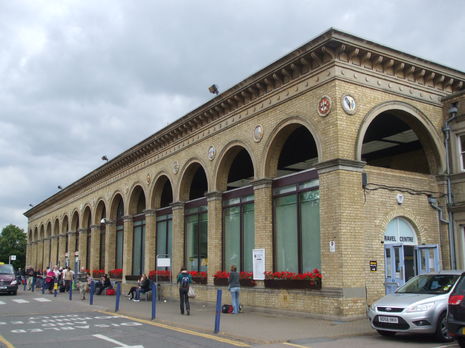East West Rail construction plans anger local residents
Campaign groups are protesting against the East West Rail Company’s plans to build a route through South Cambridgeshire

South Cambridgeshire residents have recently expressed their concern and anger, after East West Rail Company (EWR) announced plans to build a railway line travelling south from Cambourne into Cambridge Station, rather than taking a more northern approach from the town into Cambridge North.
EWR consulted the public on five potential routes into Cambridge. Their recent consultation technical report highlights that whilst a northern route is “feasible”, it would be “complex and expensive”, and so they are prioritising a southern approach.
Cambridge Approaches, a grassroots campaign in South Cambridgeshire, believe that they have been denied a fair opportunity to protest the proposal, and are fundraising to take the developers to court for a judicial review.
David Revell, a Haslingford parish councillor, has criticised the consultation document for addressing the northern route possibility in a “biased” way, by only emphasising the advantages of the southern route.
The EWR’s plans would lead to many developments in South Cambridgeshire, including the construction of a large wall and a flyover south of Harston.
CamBed Rail Road, a campaign group working alongside Cambridge Approaches, have proposed a “great trench” instead of a “great wall”, as they think this will be less visually intrusive.
The concerns of those opposing the EWR project range from environmental to personal, with one resident concerned that they will lose an orchard that has been in their family for generations.
Dr William Harrold, co-founder of Cambridge Approaches, told Cambridgeshire Live: “As we feared, [the railway line] will have quite a big impact on communities in South Cambs”, whilst several people have received letters of compulsory purchase to enable the demolition of their homes.
Harrold said that they have “been looking hard at the northern approach” and still believe that it has “legs”, and therefore deserves fair consultation. He says that whilst he recognises the benefits of the railway, he does not believe that they outweigh the costs. Furthermore, he suggests that any developments should “serve the local community traffic”, instead of the focus on easing travel between Oxford and Cambridge.
David Revell stressed that the residents of Southern Cambridgeshire’s “main objection is that the public weren’t given a fair consultation on the northern route at the same time as the southern route.”
Revell adds that residents have responded with “fear and real upset” to the plans.
In response to the demands of Cambridge Approaches and CamBed Rail Road, a spokesperson for East West Rail Company issued a statement disputing some of the claims: “EWR Co believes that a southern approach to Cambridge results in far fewer impacts on residents and businesses.”
The spokesperson stated that this decision is supported by “updated environmental, economic and technical analysis”, and emphasised the benefits of a southern approach such as there being fewer flood plains to navigate and fewer businesses affected.
The East West Rail scheme aims to “re-establish a rail link between Cambridge and Oxford to improve connections between East Anglia and central, southern and western England.”
The scheme is central to the government’s plans to provide critical transport infrastructure within the Oxford-Cambridge Arc, with a view to boosting economic growth and creating more jobs.
In January 2021, the government pledged £760 million towards the East West Rail scheme, which will create 1500 skilled jobs.
This comes as Grant Shapps, the Secretary for Transport, announced the cancellation of the Oxford-Cambridge (Ox-Cam) expressway last month as “analysis confirmed the proposed project was not cost-effective.” The EWR’s projects are part of the government’s commitment to developing a Spatial Framework within the Oxford-Cambridge Arc to support sustainable economic growth across the area.
 News / Uni Scout and Guide Club affirms trans inclusion 12 December 2025
News / Uni Scout and Guide Club affirms trans inclusion 12 December 2025 News / Cambridge Vet School gets lifeline year to stay accredited28 November 2025
News / Cambridge Vet School gets lifeline year to stay accredited28 November 2025 News / Pembroke to convert listed office building into accom9 December 2025
News / Pembroke to convert listed office building into accom9 December 2025 Features / Searching for community in queer Cambridge10 December 2025
Features / Searching for community in queer Cambridge10 December 2025 News / Uni redundancy consultation ‘falls short of legal duties’, unions say6 December 2025
News / Uni redundancy consultation ‘falls short of legal duties’, unions say6 December 2025










